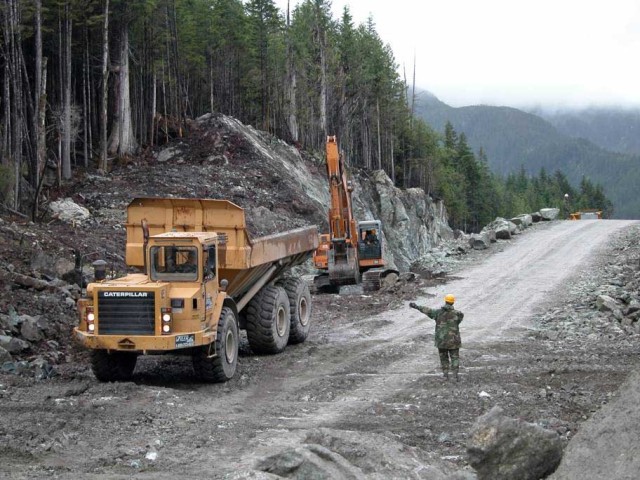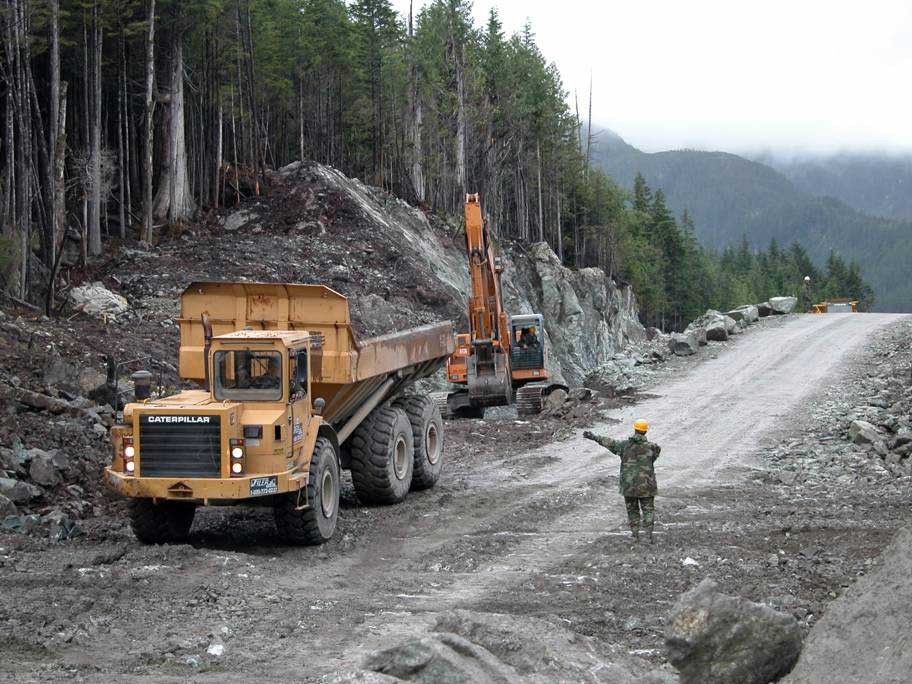ANNETTE ISLAND, Alaska (National Guard Bureau, Aug. 27, 2007) - Missouri National Guard, other military personnel, Alaska legislators and local residents celebrated the transfer of a 14.3-mile road to the Metlakatla Indian community Aug. 6. The new road, termed a "lifeline" for the Metlakatla, winds through the rugged mountains to a ferry boat dock on the northern tip of this remote island.
"I am proud that has provided several key leadership positions as well as engineering expertise toward the completion of this project," said Maj. Gen. King E. Sidwell, adjutant general of the Missouri National Guard, during the transfer ceremony.
The Missouri National Guard provided engineers, prepared hot meals, conducted water purification, provided medical care and maintained heavy equipment to support the project.
"The people here are very grateful to the Missouri National Guard," said State Command Sgt. Maj. Frank Gross, who attended the ceremony."
"Most people can only dream about being part of something greater than themselves. I am fortunate that I get to reminisce about being part of a dream that is close to becoming a reality," said Missouri Army Guard Col. Jerry West, commander of Joint Force Engineering Component Command.
Col. West, who has been a key leader with the Alaskan road project for more than eight years, was presented a tribal robe by Metlakatla Indian Community during a celebration that marked the end of the military's role in the project.
"When the community of Metlakatla honors a very important person, they present them with a button robe blanket. My blanket has all four clans of the community: Eagle, Raven, Whale and Bear," explained Col. West. "These four clans form a circle that represents a family which cannot be broken. Having all four clans together brings power and strength."
First proposed by the Metlakatla Indian community nearly 60 years ago, the road project started to become reality in 1997 when plans were formulated and the base camp, Camp Wy Wuh, was built, according to project reports. Road construction began in 1998 with clearing the land through the temperate rainforest. That was followed by blasting hillside rock, excavating and hauling away materials to make way for the roadway, installing culverts, building the road surface, and bridge construction.
Approximately 12,000 military members served primarily on two-week work rotations to support the project. Seabees and National Guard engineers blasted approximately 1.5 million cubic yards of solid granite. Members of the active Army, National Guard and Marines hauled away over 3 million cubic yards of material.
Progress on the roadway ranged from nearly three miles per year to less than one mile per year. Limitations on construction were mainly attributed to harsh winters, high rainfall and safety considerations.
"The highlight of this mission - other than the obvious success of completing this road - is our safety record," said Col. West. "I was very thankful to have other experienced professionals to work with in building the road. Alaska is forest, mountains, muskeg, rain and dangerous waters. In the 10-year history of this project no one sustained an injury resulting in loss of limb or loss of life."
Col. West said the task force is slated to lower its flag on Sept. 15, and Alaskan Command will complete the activities on the island. "There are many Missouri Guardsmen who have contributed to our success, some retired and some still active," said Col. West. "I thank them all for what they have done. I consider myself fortunate to have been given the opportunity to serve while doing something for the servicemembers who benefited in their training while helping make a dream come true for the Metlakatla."


Social Sharing